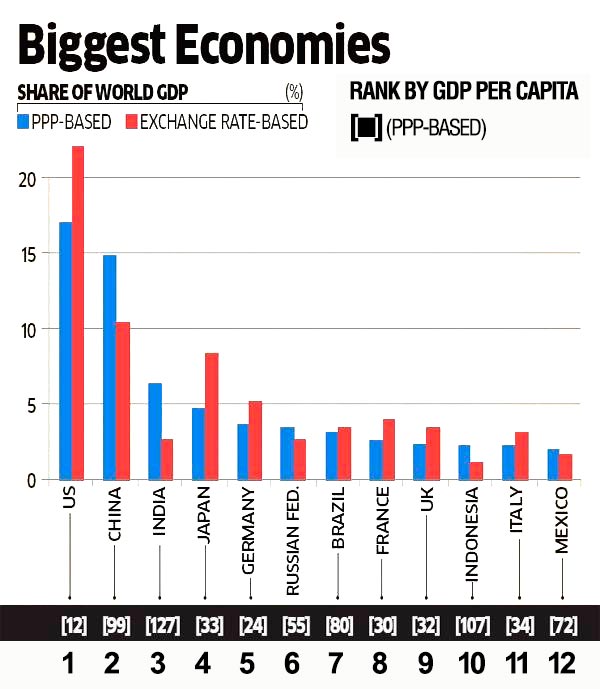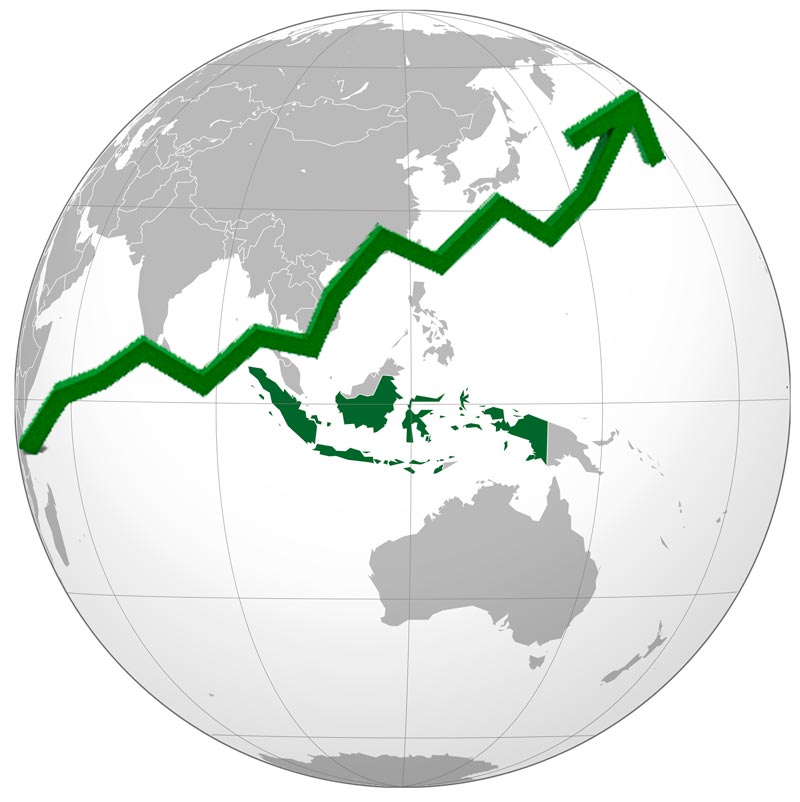Indonesia is the World’s 10th Largest Economy
Indonesia climbs 5 notches to become world’s 10th largest economy
Indonesia is the world’s 10th-largest economy, climbing five places in six years, according to a recent World Bank affiliate’s report.
In the report compiled by the 2011 International Comparison Program (ICP), which is overseen by a global office housed in the WB, the United States remained the world’s largest economy, followed by China, India, Japan, Germany, Russia, Brazil, France, the United Kingdom, Indonesia, Italy and Mexico.
The countries in the top flight of the 2011 ICP report differed only slightly from those in the 2005 report, in which Spain was among the top 12 world economies.
Based on the 2011 report’s summary and findings, Indonesia recorded US$2,058 billion (S$2,579 billion) in gross domestic product (GDP) expenditure and $8,539 in GDP expenditure per capita.
In the 2005 report, Indonesia recorded $707.9 billion in GDP expenditure and $3,234 in GDP expenditure per capita.
It is, however, difficult to compare results between the 2005 ICP and 2011 ICP reports because the number of economies included was very different, the 2011 report says.
The 2005 ICP report covered 146 economies, while the 2011 ICP round covered 199 economies.
“The relative rankings of the three Asian economies – China, India and Indonesia – to the United States doubled while Brazil, Mexico and Russia increased by one-third or more,” it says.
According to the report, the six biggest emerging economies now produce goods and services of equal value to the six biggest rich countries.
The five economies with the highest GDP per capita are Qatar, Macao, Luxembourg, Kuwait and Brunei. The first two economies have more than $100,000 per capita, the ICP report said.
ICP, according to the report, estimated purchasing power parities (PPPs) for use as currency converters to compare the size and price levels of economies around the world.
PPPs are price relatives that show the ratio of the prices in national currencies of the same good or service in different economies. For example, if the price of a hamburger in France is $6.65 and in the United States it is $4.00, the PPP for hamburgers between the two economies is $0.80 to the euro from the French perspective and 1.20 euro to the dollar from the US perspective. In other words, for every euro spent on hamburgers in France, $0.83 would have to be spent in the United States to obtain the same quantity and quality.
Before PPPs became widely available, exchange rates were used for international GDP comparisons. But exchange-rate converted GDPs can be highly misleading in indicating the relative sizes of economies and levels of material well-being, according to the report. Under such method, price levels are normally higher in high-income economies than they are in low-income economies.
Analysts have warned, however, not to rejoice too much, since the economy remains driven primarily by consumption.
Chief economist of Bank Central Asia (BCA) David Sumual said Indonesia had the potential to become the seventh- or even fifth-largest economy in the world by 2020 despite its reliance on consumption.
“We have to focus on several important policies, including fiscal and bureaucratic reforms in a short term,” he said on Sunday.
He added that in the long term, the government should also fix a number of problems, such as income disparity and red tape in investment licensing processes, and be more open to foreign investment.
He said that fiscal reform, such as overcoming the problem of energy subsidies, and bureaucratic reform were the keys to reaching the goal.
“Indonesia’s economy is greatly influenced by fuel subsidy issues. If the government manages to overcome them, then the economic situation could become more stable.”
Atmajaya University economist Agustinus Prasetyantoko said Indonesia made it to the 10th position only because its economic growth peaked in 2011 at 6.5 per cent.
Bank Mandiri chief economist Destry Damayanti said the government should focus on the manufacturing and farming sectors, where Indonesia had competitiveness, to absorb more workers, help increase per capita income and reduce the gap between the rich and the poor.



